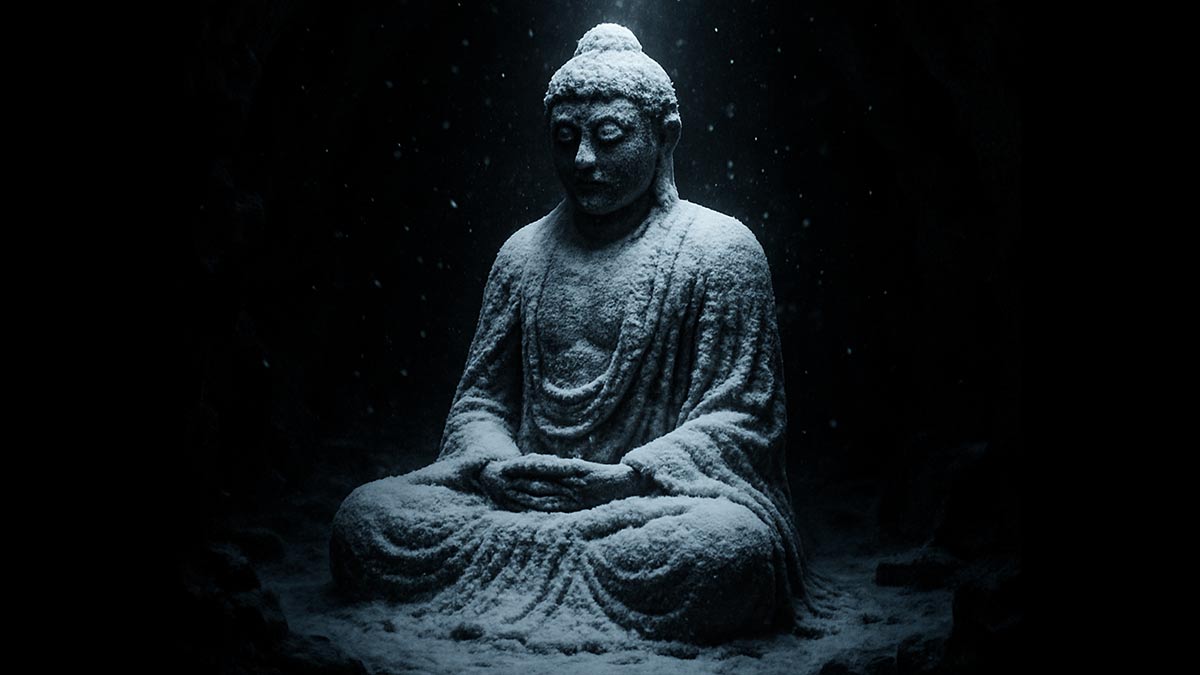When a lecture on 'What is the Buddha worth?' filled a hall, sparked a debate
 Remains of the past: A representational image of a Buddha statue | Shutterstock AI
Remains of the past: A representational image of a Buddha statue | Shutterstock AI
It was refreshing to see a packed hall at the India International Centre, New Delhi, with every seat taken, people standing and even sitting on the floor, all to attend a lecture at 6.30 pm on a weekday. Well, it turns out that 'What is the Buddha worth?' is a question that drew a crowd, and for good reason.
The question is important and drew worldwide attention recently when Sotheby’s Hong Kong put up for auction the holy relics linked to the Buddha that were excavated in 1898 by a colonial engineer William Claxton Peppé.
He had ordered the excavation of a stupa on his estate in Piprahwa, a village in northern Uttar Pradesh. Among what was unearthed were gemstones, precious metals, and some cremated remains of the Buddha, who was born in Kapilavastu.
What's also important, highlighted Naman Ahuja, professor of art history at the Jawaharlal Nehru University, who held the talk, is that an urn that was inscribed in early Brahmi script had identified the depositors who had enshrined the Piprahwa relics as members of the Buddha's Shakya clan. Notably, Piprahwa is understood to be the ancient Kapilavastu, which was the capital of the Shakyas. "So violence is perpetuated to a known person, not an unknown entity," Ahuja highlighted.
While the British Crown claimed the Piprahwa finds under the 1878 Indian Treasure Trove Act, the bones and ash were sent to the king of Siam, most of the gems went to the Indian Museum in Kolkata, and Peppé was allowed to retain a fifth of the gems that were described as "duplicates" of the others. It's these gems that were put on auction by Sotheby’s, which had described the gem relics as “among the most extraordinary archaeological discoveries of all time”.
"Should the owners be compensated when we cannot put a price on the relics?" commented Ahuja at his lecture. "Just because a blind eye was cast on the sale of the contents of the relic boxes of the many stupas of Gandhara as 'artifacts' on the art market, that is not the case that can be perpetuated here," he added.
Buddhism is practiced by about 500 million people worldwide, and relics hold immense importance. For example, India sent some relics of the Buddha to Vietnam last month, which drew about 17.8 million worshippers.
Ahuja also drew parallels between the importance of relics with other faiths. For example, "Western Europe's very historical claim to be being the rightful home to Christianity was dependent on bringing to its churches relics of so many of the apostles and saints who had spent their lives being active in places like Jerusalem, Egypt, and so on." In Islam, too, there has been "a long history of establishing political authority because leaders have claimed to have relics of the Prophet."
While making a case to stop the auction, the Union Ministry of Culture further 'emphasised' that the relics rightfully belong to India, from where they were taken during the colonial era," it said in a release.
Notably, in 1938, a case was made before the British government to return the relics taken from the stupas at Sanchi in Madhya Pradesh. The relics came back to India in 1952. It's crucial to see what'll happen to the Piprahwa gem relics.
Society